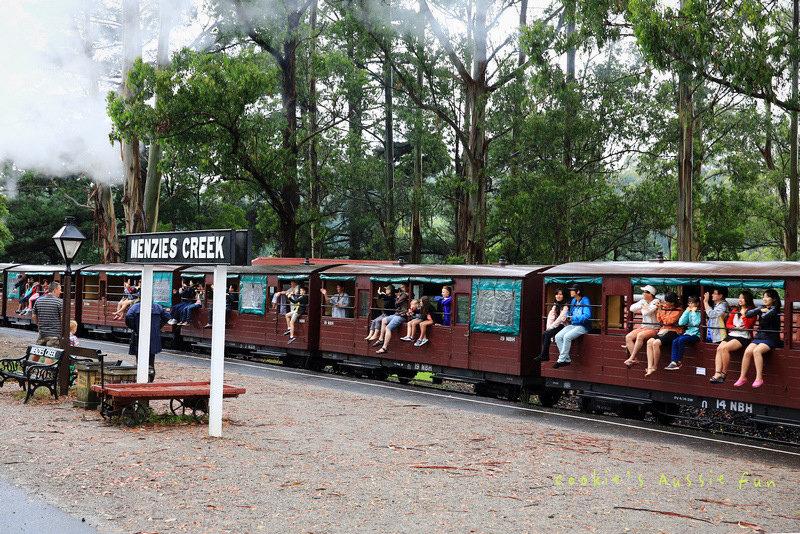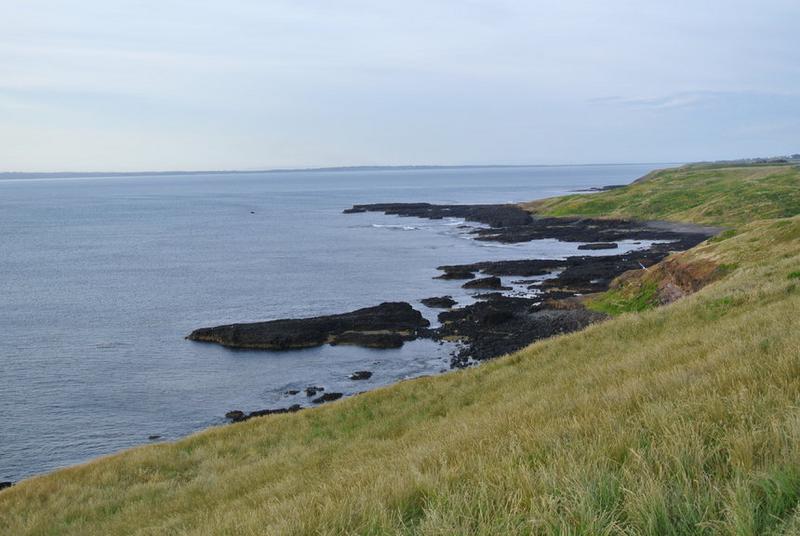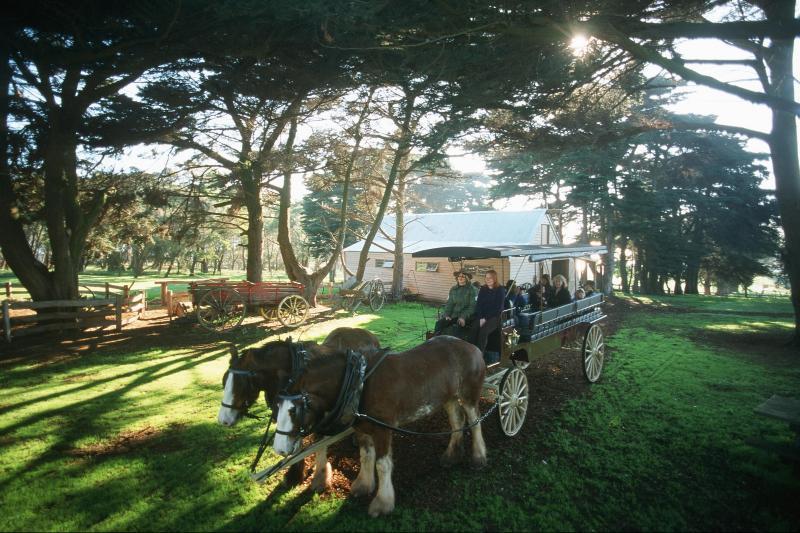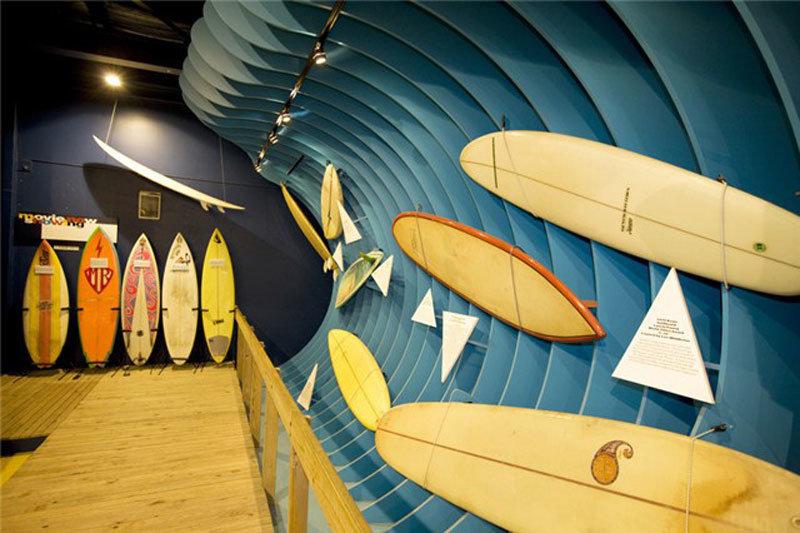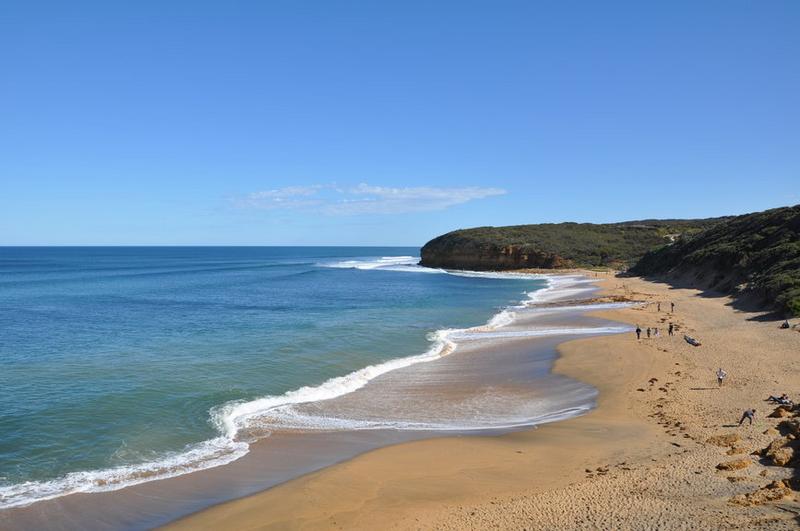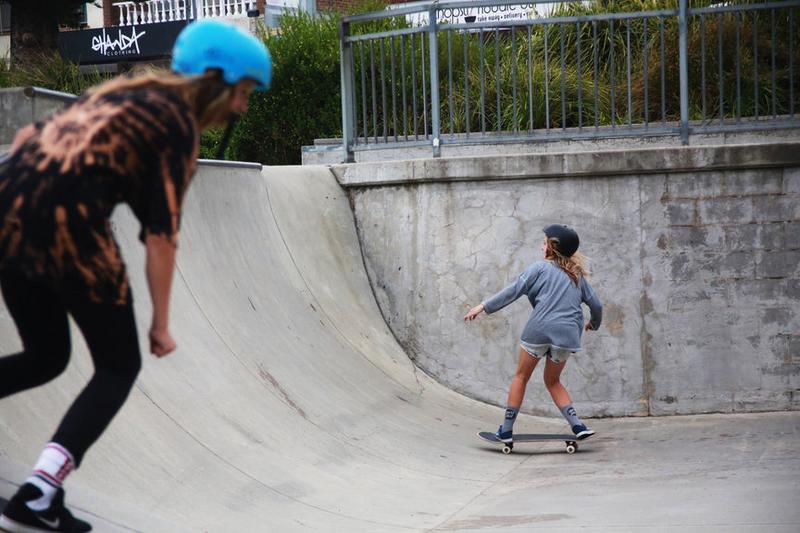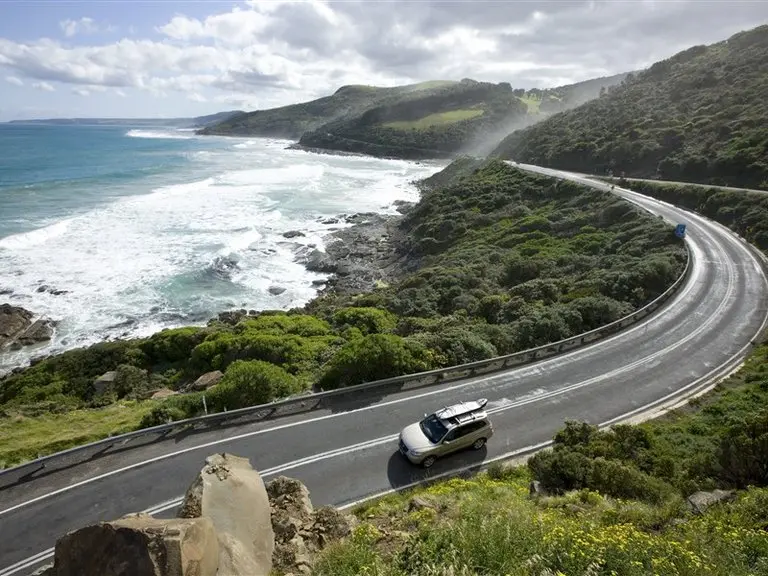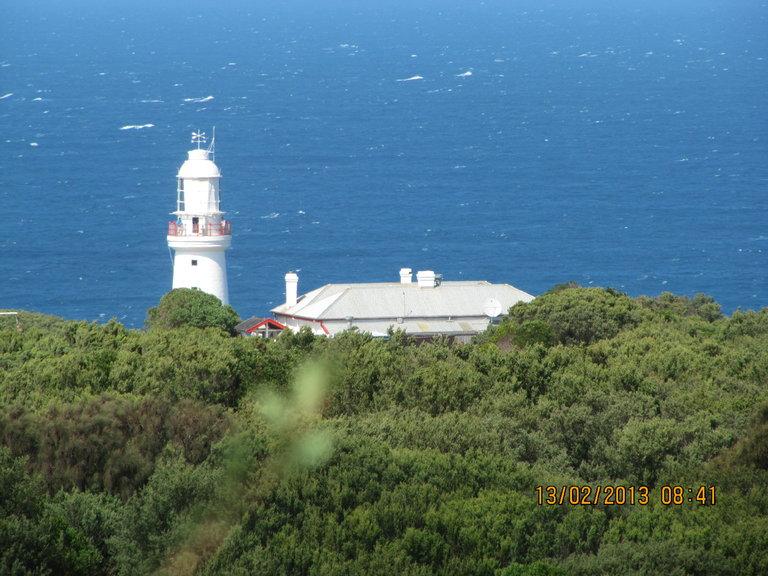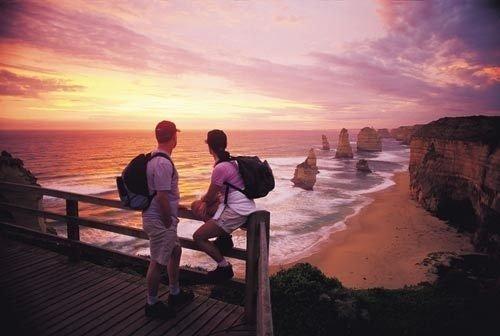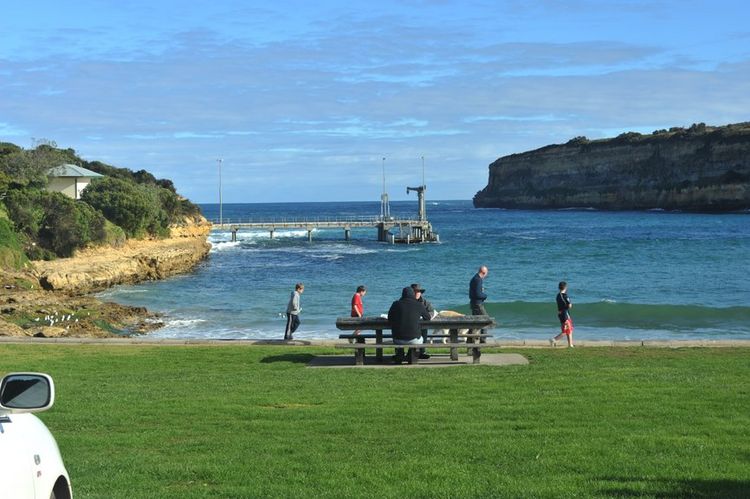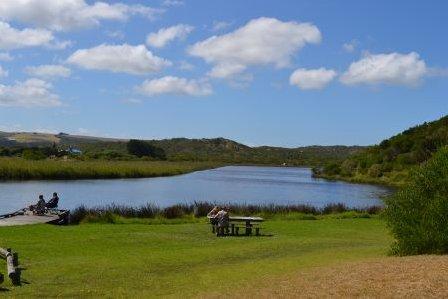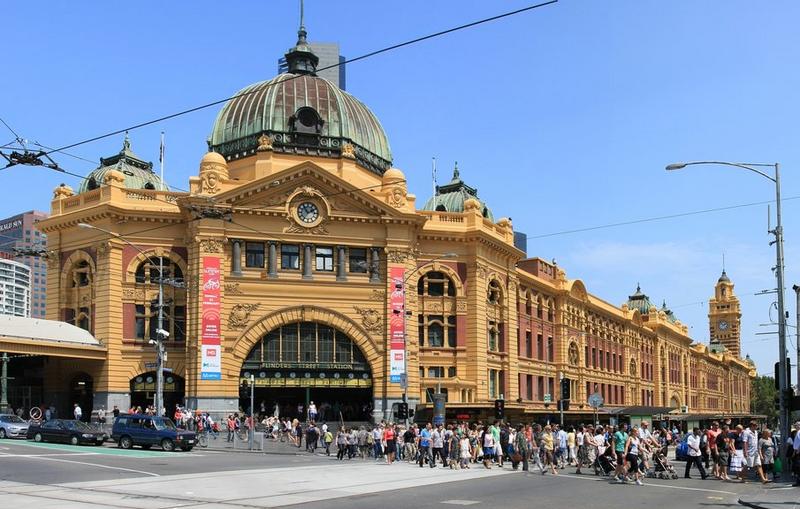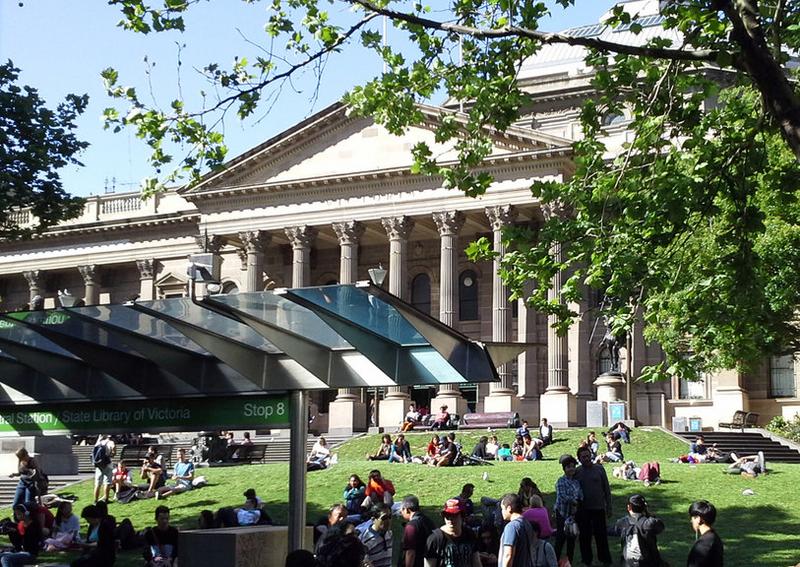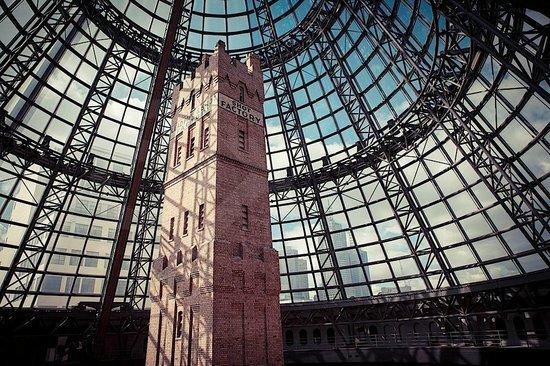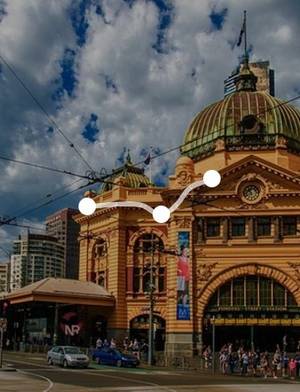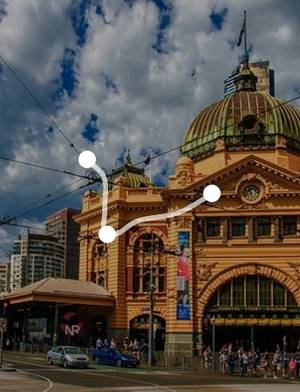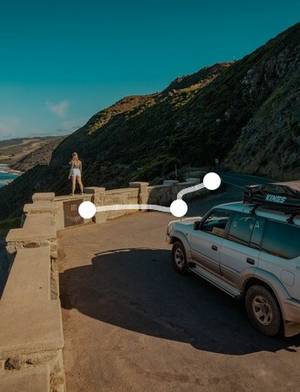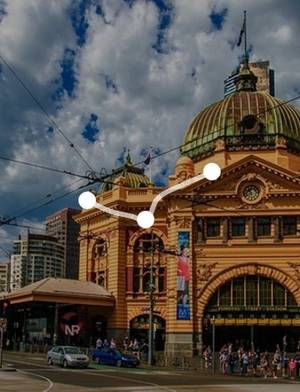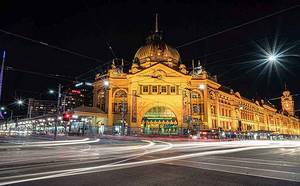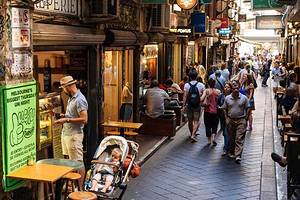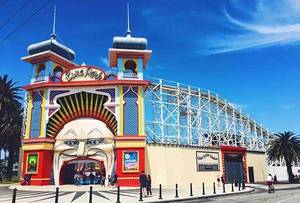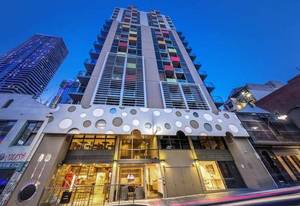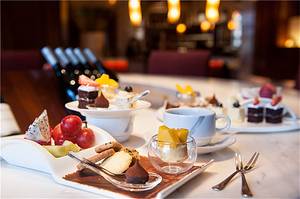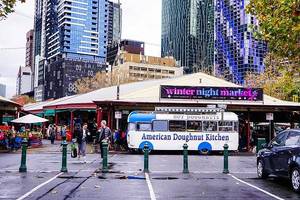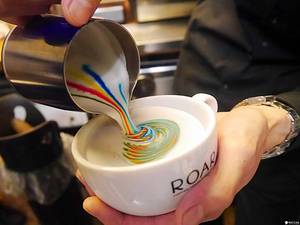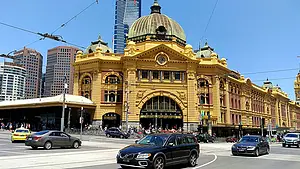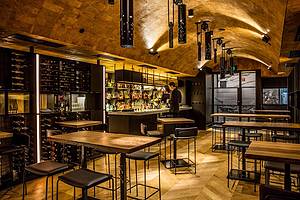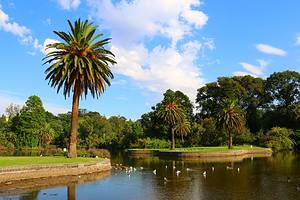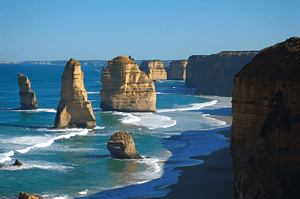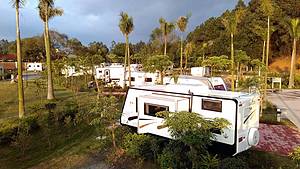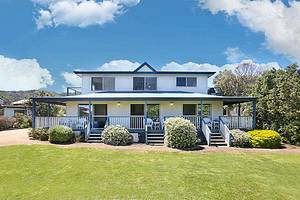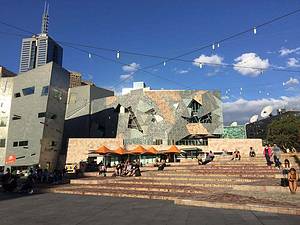A 7-day self-driving trip along the stunning Great Ocean Road
6 cities |
19 attraction(s) |
total distance 657
km
 TIPS
TIPS
Day1
Day2
Day3
Day4
Day5
Day6
Day7
Day1: Melbourne > Phillip Island > Melbourne
3 attraction(s) ·
133 km
1
Translated into English, it becomes: As one of the narrow-gauge railway lines built by the government in the early 1990s for the development of remote areas, the Puffing Billy steam train has become one of the best-preserved steam train routes in the world today thanks to the relentless efforts of volunteers. Following many children on board, crossing over dozens of meters high wooden trestle bridges, and shuttling through the picturesque Dandenong Ranges, after an hour's journey, you will arrive at Emerald Lake where you can take a walk on the surrounding hiking trails or enjoy outdoor barbecues and feed the friendly lorikeets.
116
km
2
Phillip Island
Phillip Island (Penguin Island) is an island located about 130 kilometers southeast of Melbourne, on the western bay mouth of the southern coast of Victoria, Australia. Phillip Island is home to a variety of wildlife, including koalas and kangaroos, making it a true animal paradise. The Summerland Beach near Nobbies Cape in the southwest of the island is famous for being a sanctuary for little penguins. These penguins are the smallest penguins in the world, measuring only 30 centimeters in height, and they are incredibly adorable.
During your visit to Penguin Island, you can also visit the Melbourne Zoo and the chocolate factory. The factory features a chocolate art gallery, a chocolate waterfall, and a one-ton chocolate block, which are all beloved by chocolate enthusiasts. Upon entering the chocolate factory, you will receive a complimentary piece of chocolate and can enjoy the exquisite chocolate crafts made by the factory while savoring the delicious chocolate. In the evening, at the tourist area of Penguin Island, you can clearly see the adorable little penguins returning from the sea to their nests. These small penguins have chubby bodies covered with blue fur, resembling tuxedos. They come back in groups, searching for their way home, creating a heartwarming and fascinating scene.
At sunset, a special group of stars, the little penguins, arrive here, earning Phillip Island the nickname "Penguin Island." You can sit on the beach and wait for these smallest penguins in the world to swim out from the sea in groups, waddling through the sand beside you and returning to their burrows. On the island, there are also activities such as watching milking, sheep shearing, and sheepdog performances at Churchill Island Heritage Farm, observing Australian wildlife at the Koala Conservation Centre, and encountering fur seals near a group of rocks called the Nobbies.
17
km
3
Churchill Island is very close to Phillip Island and has a significant historical importance. The island features unique Australian farms that offer various daily farming activities, such as milking cows and shearing sheep starting at 2:00 PM every day. Additionally, visitors can enjoy hiking around the island and admire the beautiful scenery both on the island and along the coast. The island offers a wide selection of villas, gift shops, and cafes, and has excellent public facilities and services.
Day2: Melbourne > Great Ocean Road
2 attraction(s) ·
21 km
1
Ashcombe Maze and Lavender Gardens cover an area of 25 acres, featuring a unique maze and high-quality woodland gardens that inspire the senses, celebrate the seasons, and showcase the true beauty of trees and plants. It provides an unforgettable garden experience that is both educational and full of fun and wonder. This world-renowned magical place is meant to be shared with friends and family, experiencing excellence in quality. It is a sustainable garden with immense precious value, needed for future generations.
21
km
2
Peninsula Hot Springs is a natural hot mineral spring and spa centre located on the Mornington Peninsula in Victoria, Australia. It offers a variety of bathing experiences and relaxation treatments. The Bath House is suitable for all ages and has a cafe, while the Spa Dreaming Centre is for guests 16 years and older and offers dining options. Both facilities have specific opening hours.
Day3: Torquay > Great Ocean Road
3 attraction(s) ·
49 km
1
Surf World is a heaven for surf culture. It is the largest surfing and beach culture museum in the world, including the Australian Surfing Hall of Fame as part of the overall surfing exhibition. Surf World has been recognized by the International Surfing Association as one of the "most important centers of world surfing heritage." Surf World is a must-visit iconic interactive tourist attraction that showcases the essence of past, present, and future surfing activities through modern means. It provides comprehensive insights into surfing history, culture, and sports on regional, national, and global levels.
8
km
2
During Easter every year, a grand Rip Curl Pro World Surfing Championship is held at Bells Beach. Surfers from all over the world gather here to present a high-level competition for surfing enthusiasts and travelers who come from all over. At other times, like other beaches along the Great Ocean Road, it is calm and relaxing, making it a good place to unwind.
41
km
3
My Great Ocean Road journey officially started from Lorne. This picturesque seaside town, surrounded by lush greenery, unfolded before my eyes, bringing me endless surprises and awe. Lorne, located between Loutit Bay and Otway Ranges forest, is a well-known tourist town along the Great Ocean Road and a popular vacation destination for many locals in Australia.
Day4: Apollo Bay > Great Ocean Road
5 attraction(s) ·
101 km
1
The Great Otway National Park stretches from the town of Torquay to Princetown, and extends northwards through the Otway hinterland to Colac. The park features a winding coastline, sandy beaches, rocky platforms, wind-swept heathland, towering forests, fern-filled valleys, majestic waterfalls, and peaceful lakes. It showcases the diversity of nature, with magnificent waterfalls and sparkling gorges. The park offers excellent camping grounds throughout, catering to families seeking a holiday spot for their camper vans, as well as those in search of solitude to gaze at the night sky.
12
km
2
Cape Otway Lighthouse is the oldest and well-preserved lighthouse in Australia. It provides hope for early Australian immigrants after months of sailing. From the top of the 90-meter tall tower, you can overlook the wild Southern Ocean and understand why numerous shipwrecks occurred along this isolated and rugged coastline. The museum houses early telegraph and radar stations, and you can also enjoy the spectacular views of Bass Strait. From Apollo Bay to the lighthouse, there is a great chance to see koalas. The waterfalls and beautiful sunsets here will also impress you with the wonders of nature. The traditional Head Lighthouse Keeper's cottage has four bedrooms, two bathrooms, a fireplace, a fully equipped kitchen, and laundry facilities. The Manager's House is renovated and offers a comfortable experience for travelers.
78
km
3
The Twelve Apostles is one of the most famous attractions on the Great Ocean Road, located in the Port Campbell National Park. These rock formations, initially consisting of thirteen different-shaped giant limestone pillars, resemble the twelve apostles following Jesus in the Bible, hence the name "The Twelve Apostles."
These pillars, about 45 meters high, have been eroded and weathered by the sea over time, and five of them have collapsed. However, this does not diminish the awe and admiration that this natural wonder brings. The best time to admire the Twelve Apostles is during sunrise and sunset. Standing on the lookout platform, overlooking the vast expanse of the sea, feeling the gentle sea breeze, one can't help but marvel at the power of nature's craftsmanship.
The park is free for visitors and has an information center providing cultural information and basic facilities such as toilets. There are numerous viewing platforms throughout the park, allowing visitors to experience the visual impact of this wonder from different angles. Due to the fragile geological structure of the limestone, there are clear signs in dangerous areas, and visitors are advised to stay away. The best time for photography is in the early morning and evening on sunny days.
5
km
4
Lock ard Gorge is located in the Campbell Port National Park, a 10-minute drive west of the Twelve Apostles.
8
km
5
Camperdown Bay, located on the western end of the Great Ocean Road in Victoria, Australia, is a natural gorge. The Campbell Port National Park was established in 1964 and named after Captain Alexander Campbell. It is a fascinating seaside village that can be reached either by the Princes Highway, 245 kilometers southwest of Melbourne, or via the Great Ocean Road, 281 kilometers in total.
Day5: Great Ocean Road > Warrnambool > Melbourne
3 attraction(s) ·
352 km
1
The Port Campbell National Park is located 190 kilometers southwest of Melbourne. It covers over 1,700 hectares and is known for its limestone geological formations, including famous landmarks such as the Twelve Apostles, Loch Ard Gorge, and Gibson Steps. The park is also a haven for many native Australian bird species, such as emus and honeyeaters. In winter nights, penguins can be spotted along the coastline, but it's important to dress warmly to avoid catching a cold. Travelers who visit this park are often drawn by the Twelve Apostles rock formations, which are a highlight of the Great Ocean Road and should not be missed.
77
km
2
The eruption of a volcano formed a volcanic lake in Wunanbur to the west about 30,000 years ago, as well as a densely vegetated area. There are abundant wildlife, many lightweight hiking trails, and many plants, as well as an indigenous cultural center. It is very suitable for family picnics.
275
km
3
Flinders Street Station is the largest and busiest train station in Melbourne, Australia. It is a Victorian-era building and the first railway station in Melbourne. Located in the city center, directly opposite Federation Square, with St Paul's Cathedral nearby. It is a landmark building on Swanston Street and a popular meeting point for locals. The station's famous "meet under the clocks" refers to the large clock in front of the station. The entire station is made of yellow stone, with a distinctive bronze dome. At night, the station is illuminated by yellow lights, showcasing a different classical and magnificent Victorian architecture. It is worth visiting Flinders Street Station at night to experience its unique charm.
Day6: Melbourne
2 attraction(s) ·
4 km
1
You can choose to immerse yourself in the Victoria State Library established in 1854, admire the famous giant dome of the La Trobe Reading Room, or find a quiet corner in the Arts Reading Room to enjoy music. Sitting lazily on the lawn in front of the library with the locals, basking in the sun and watching people pass by, is also a good way to relax. Just be careful of seagulls eyeing your snacks.
4
km
2
With over 12,000 species of plants, it is more accurate to say that it is Melbourne's most "luxurious" garden. The botanical garden is located on the beautiful Yarra River, where exotic flowers and plants from Australia and around the world thrive. You can take a stroll along a dirt road through a small patch of pristine rainforest, or have some fun with a frisbee on the vast lawns scattered throughout. There is also a 4-kilometer running track that runs through the garden, and you can even spot eels and black swans in the lake.
Day7: Melbourne
1 attraction(s) ·
0 km
1
Melbourne Central is a fantastic shopping center with an interesting architectural feature. The preserved Ammo Tower not only holds historical and cultural significance, but also allows for the effective use of natural light through the glass dome above the shopping center. Another highlight is the special clock in the mall that puts on a unique performance every hour.
